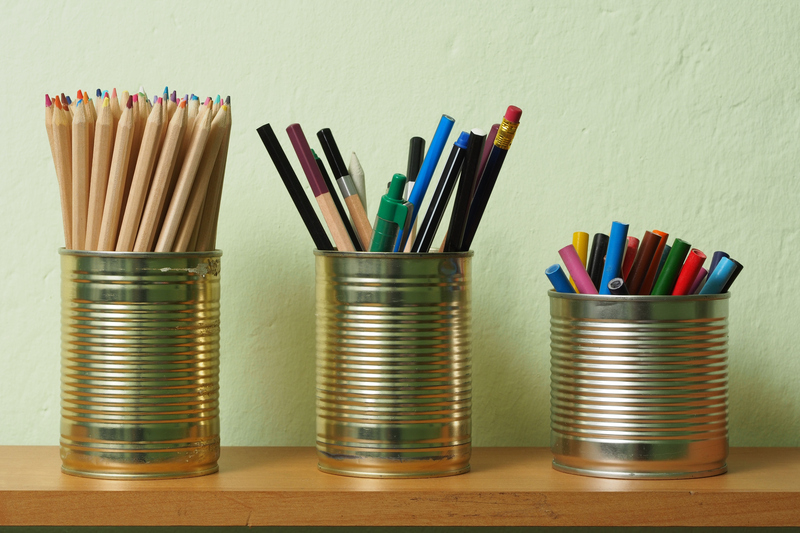From Refuse to Riches: Transforming Trash into Stunning Works of Art
In a world where environmental consciousness is taking center stage, a remarkable trend has emerged: turning everyday trash into breathtaking masterpieces. This movement, often called upcycled art or trash art, is not just a creative outlet but a powerful statement about sustainability and innovation. In this comprehensive guide, we'll explore the fascinating journey of transforming refuse into riches and discover how discarded materials are finding new life as stunning works of art.
The Rise of Trash Art: An Unexpected Revolution
The concept of trash art--also known as upcycled art or recycled art--has gained significant traction over the past few decades. As societies grapple with mounting waste and environmental crises, creative minds have turned toward repurposing discarded materials. What was once viewed as waste is now being reimagined as valuable resources for artistic expression.
- Turning challenges into opportunities - Artists are facing the challenge of overconsumption and pollution head-on by creating meaningful works from refuse.
- Promoting environmental awareness - These works often carry a strong eco-friendly message, inviting onlookers to reconsider their relationship with waste.
- Redefining beauty - By transforming trash into art, creators highlight the hidden potential in everyday materials.
What Is Upcycled Art?
Upcycled art refers to the process of taking items destined for landfills and converting them into aesthetically pleasing or functional pieces. This art form is at the crossroads of sustainability and creativity, merging environmental responsibility with bold visual statements.

The Creative Process: How Artists Transform Trash Into Art
From bottle caps to broken electronics, the possibilities are endless when it comes to repurposing trash for art. The creative process generally encompasses a series of deliberate steps, each underscoring the importance of resourcefulness and imagination.
Step 1: Sourcing Materials
- Scavenging and Collecting - Artists often frequent dumpsters, recycling centers, and even beaches to gather unique materials.
- Donations and Partnerships - Some collaborate with local businesses or communities to acquire items like wine corks, scrap metal, or fabric scraps.
- Selection Criteria - Items are chosen not just for availability, but also for texture, shape, and potential to be transformed.
Step 2: Conceptualization
Before any creation begins, artists visualize what the discarded items can become. Often, the shape or material inspires the result--from a worn-out tire morphing into a regal throne to a plastic bottle becoming part of a luminous chandelier.
Step 3: Construction and Assembly
Using a blend of traditional and innovative techniques--welding, adhesive bonding, weaving, and sculpting--artists bring their visions to life. The transformation is as much about artistry as technical skill.
Step 4: Finishing Touches
Final adjustments, painting, and refinements are applied to enhance the piece's aesthetic value and durability, ensuring the artwork tells its story and stands the test of time.
Icons and Innovators: Celebrated Trash Artists
The art world is replete with individuals who have mastered the craft of turning trash into treasure. Their works not only captivate audiences but also push boundaries, challenging us to rethink our relationship with waste.
Vik Muniz: The Master of Recycled Imagery
Brazilian artist Vik Muniz is famous for creating stunning visual compositions from objects like dust, chocolate, and various remnants of trash. His 2010 documentary, Waste Land, spotlighted his collaboration with Rio de Janeiro's garbage pickers to create hauntingly beautiful portraits from landfill detritus.
El Anatsui: A Tapestry of Transformation
Ghanaian sculptor El Anatsui employs discarded bottle caps and aluminum scraps to assemble shimmering, tapestry-like installations. His works, exhibited globally, are a tribute to Africa's material history and the intricate labor behind every piece.
Jane Perkins: Colorful Collage from Everyday Objects
British artist Jane Perkins breathes new life into old toys, buttons, and miscellaneous plastics, arranging them into vibrant, lifelike portraits. Her method celebrates the diversity and potential of modern refuse in creating recognizable faces and famous scenes.
Techniques and Materials: The Building Blocks of Upcycled Art
Artists specializing in "transforming trash into art" use a broad spectrum of media and techniques. Whether working with glass, metal, paper, or textiles, the only constant is innovation. Let's explore some common materials and how they are transformed.
Plastic Bottles: From Litter to Light
- Chandeliers and Lamps: By cutting, shaping, and assembling plastic bottles, artists craft intricate lighting fixtures that cast mesmerizing patterns.
- Sculptures: Rigid and lightweight, plastic bottles serve as perfect building blocks for lifesize figures and overlay art installations.
Metal Scraps: Industrial Elegance
- Assemblage Art: Welders turn machine parts, wires, and car components into dynamic sculptures, from animals to abstract forms.
- Functional Art: Repurposed metal can become unique furniture or home decor, blending utility with aesthetic.
Paper and Cardboard: Fragile Yet Powerful
- Paper Mache: Classic papier-mache is often augmented with modern newspaper, magazines, or packaging to create colorful masks and models.
- Collage: Layering torn posters, advertisements, and flyers, artists evoke urban culture and commentary.
The Environmental Benefits of Upcycled and Trash Art
Turning rubbish into art isn't just about artistic flair--it's also a crucial part of the sustainability movement. Here are some significant benefits:
- Waste Reduction: Diverting items from landfills helps mitigate the growing problem of waste disposal.
- Resource Conservation: Reusing materials saves on the energy and raw resources required to produce new art supplies.
- Raising Awareness: Artworks serve as visual reminders of our consumption patterns and environmental impact.
- Community Empowerment: Many projects employ marginalized populations, providing both income and creative outlets.
Inspiring Examples: Trash Transformed into Riches
Public Installations
Cities around the globe are embracing upcycled public art as a means to beautify urban spaces and spread environmental messages. From monumental sculptures made of bottle caps in Cape Town to recycled metal animals in London, these projects turn city streets into open-air galleries.
Home Decor and Fashion
Trash-to-art creations aren't limited to galleries. Eco-conscious designers reimagine clothing, jewelry, and furniture from old fabric, computer parts, and more. These chic, sustainable pieces reframe refuse as fashion statements or conversation starters.
Community Art Projects
Schools and neighborhoods increasingly organize collaborative art projects using recycled materials. These efforts foster creativity, environmental stewardship, and a sense of unity, especially among young participants.
How You Can Turn Your Trash into Art
Ready to embark on your own journey from refuse to riches? Creating upcycled art is accessible to anyone with imagination and determination. Follow these steps to get started:
- Collect - Save interesting items such as jars, cardboard, old magazines, and even broken jewelry.
- Imagine - Consider how these objects might come together to form a new narrative or visual composition.
- Experiment - Don't be afraid to cut, paint, glue, or otherwise alter materials.
- Share - Showcase your creations online or at community events to inspire others.
*Even small upcycled projects, like greeting cards from scraps or planters from bottles, contribute to a larger culture of sustainability.*

Challenges and Future Prospects for Recycled Art
While the transformation of trash into stunning artworks continues to gain popularity, artists face certain challenges:
- Material Durability - Certain waste materials may not stand the test of time or weather if used in outdoor installations.
- Health Concerns - Handling certain refuse, such as electronics or chemical containers, requires caution.
- Perception - Mainstream audiences may still struggle to view trash as a legitimate medium for fine art.
Despite these hurdles, the future of upcycled art appears bright. Technological advances, increased environmental awareness, and burgeoning support from institutions promise to further legitimize and expand the movement. Public exhibitions, grants, and collaborations are on the rise, ensuring that more "waste" finds its way from the dumpster to the gallery.
Conclusion: The Beauty and Potential of Upcycled Art
From refuse to riches, the transformation of trash into art is an inspiring testament to human ingenuity and resilience. As artists and ordinary individuals repurpose what once seemed worthless, they redefine not only the boundaries of art but also our relationship with the environment. Next time you toss something in the bin, consider: could this be the beginning of a masterpiece?
Key Takeaways
- Trash art showcases the creative potential hidden within our everyday waste.
- Upcycled art supports environmental sustainability and challenges conventional notions of beauty.
- Anyone can participate--whether through solo projects or community collaborations.
- The movement continues to evolve, pushing art and sustainability into exciting new territories.
For those seeking to embrace creativity and sustainability, transforming trash into stunning works of art is both a rewarding and impactful endeavor. Join the movement from refuse to riches, and help shape a more beautiful, responsible world.
```